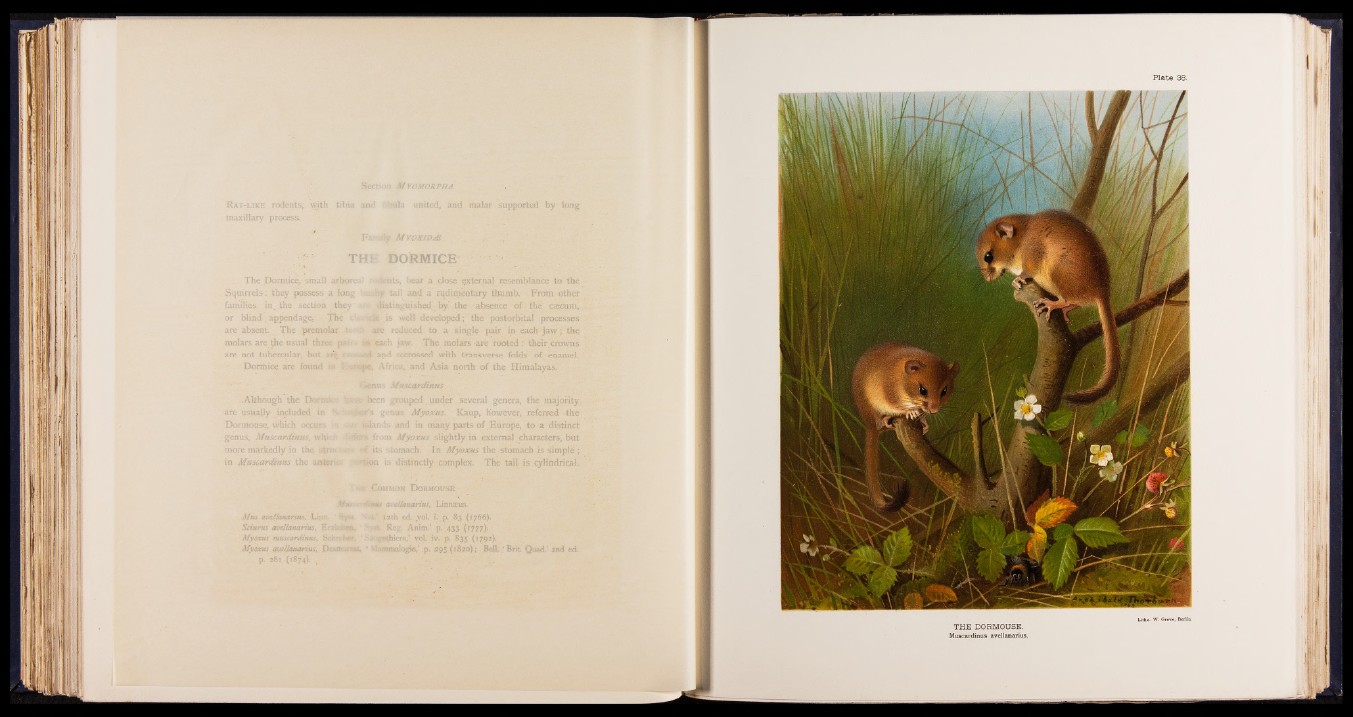
ice, small arboreal s bear a close external resemblance to the
r possess a long ■ ;:y tail and a rudimentary thumb. From other
e section they distinguished by the absence of the caecum,
adage.« The c • ■ .|é ,is well developed; the postorbital processes
he premolar te< ih are reduced to a single pair in each jayv; the
usual three pan- m each jaw. The molars are rooted: their crowns
ilar, but are cm&?«d and recrossed with transverse folds of enamel,
re found in ! .-.-ope, Africa» and Asia north of the Himalayas.
the Dormice ^few^ been grouped under several genera, the majority
iuded in v r r s genus Myoxus. Kaup, however, referred the
ch occurs m Islands and in many parts of .Europe, to a distinct
din us, which from Myoxus slightly in external characters, but
in the sfcr.:> t its stomach. In Myoxus the stomach is simple ;
s the anterio - f -jon. is distinctly complex. The tail is cylindrical.
J mx Common Dormouse
avellanarius, Linnaeus.
zrius, Linn. Syst. 12th ed. vol. L p. 83 (1766).
!anarius, Erxlefeap, ‘ Reg. Anim.’ p. 433 (1777).
tardinus, Schrebw. ‘ Saugwhiere,’ voL iv. p. 835 (1792).
(anarius, De&m&rtst, ‘ Mammalogie,’ p. ,295 (1820); Bell, ‘ Brit Quad.’ 2nd ed.
[1874). .